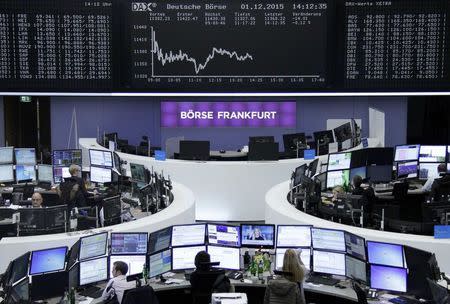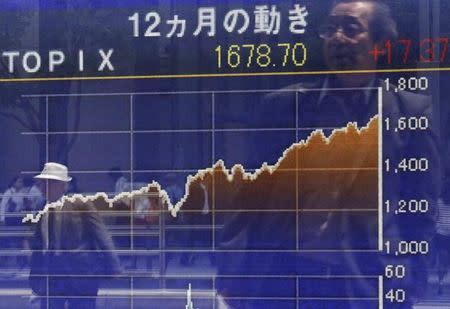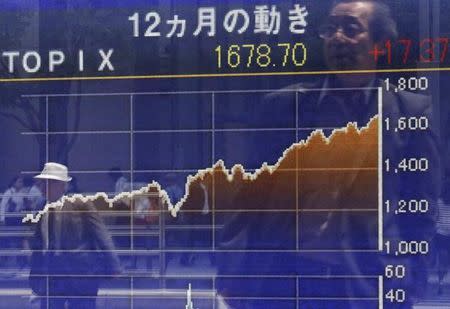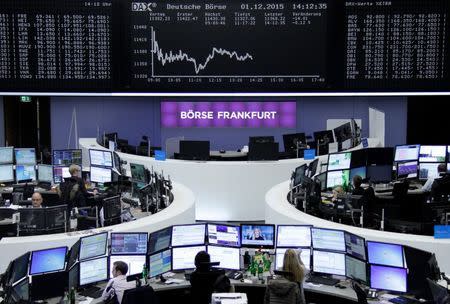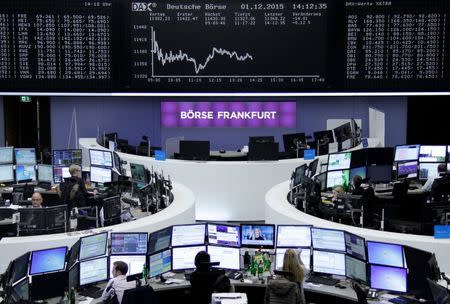Stocks slammed by ECB; euro jumps most since 2009
By Sinead Carew
NEW YORK (Reuters) - U.S. and European stocks closed down sharply on Thursday and the euro enjoyed its biggest one-day percentage rise in well over six years as investors reacted to the European Central Bank's latest policy easing measures.
U.S. bond yields saw their biggest daily rise in more than two years after the ECB cut its deposit rate by the minimum 0.1 percentage point most traders had expected, to -0.3 percent. It extended its asset purchase programme but did not increase the amount of government bonds it buys each month.
Oil futures were boosted by the sharp decline in the dollar and speculation ahead of Friday's OPEC meeting.
The euro surged 3 percent against the dollar. Last week, speculators had amassed the largest short position in the euro since May in anticipation of more ECB stimulus.
"People were very, very short euros," said Jason Leinwand, managing director at Riverside Risk Advisors in New York. "People were looking for a bigger cut in rates out of the ECB and they didn’t get it."
Wall Street's benchmark S&P 500 stock index had its biggest one-day percentage decline since Sept. 28, also in reaction to the European monetary policy move.
The Dow Jones industrial average fell 252.01 points, or 1.42 percent, to 17,477.67, the S&P 500 lost 29.89 points, or 1.44 percent, to 2,049.62 and the Nasdaq Composite dropped 85.70 points, or 1.67 percent, to 5,037.53.
Earlier in the day the FTSEurofirst ended down 3.3 percent as trading screens went red across the region in that index's biggest daily percentage drop since Aug. 24.
U.S. benchmark 10-year Treasury notes were last down 1-10/32 in price to yield 2.326 percent, up from a yield of 2.178 percent Wednesday. The yield on the 2-year note rose to 0.994 percent, its highest since April 2010.
Some of the selling in markets was said to result from leveraged funds targeting low volatility across several asset classes. Those funds are forced to respond to the simultaneous jump in volatility in bonds and stocks that occurred Thursday, because it exposes them to greater losses.
According to Bank of America research, these funds – which were heavily involved in the dramatic selloff in late August – have since returned to the level of leverage they had prior to that downturn.
The dollar index, which measures the greenback against a basket of major currencies, fell 2.2 percent in its biggest one-day percentage decline since March 18, 2009.
The ECB news overshadowed Federal Reserve chief Janet Yellen's suggestion on Thursday that the central bank would raise interest rates for the first time in a decade at the Fed's policy meeting this month.
"The biggest influence was the Draghi talk this morning. It didn't satisfy the U.S. markets," said Peter Tuz, president of Chase Investment Counsel in Charlottesville, Virginia.
Crude oil futures surged, recouping all of the previous session's losses on hedging ahead of the meeting of the world's largest oil producers, while a tumbling dollar boosted demand for most commodities.
U.S. crude settled up 2.9 percent or $1.14 at $41.08 a barrel and Brent settled up 3.2 percent or $1.35 at $43.84.
(Additional reporting by Tariro Mzezewa, Sam Forgione, Caroline Valetkevitch and David Gaffen in New York, Marc Jones and Sudip Kar-Gupta in London; Editing by Bernadette Baum and Nick Zieminski)


